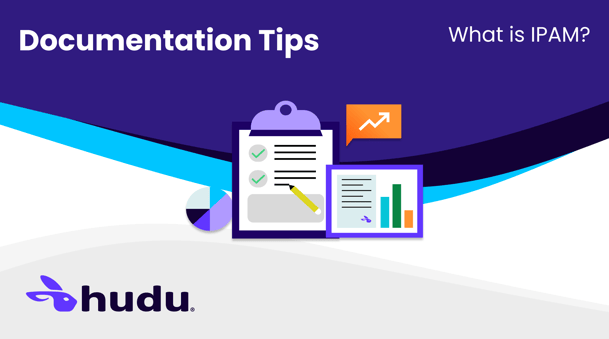

What is IPAM?
You can’t manage what you can’t see - and that’s especially true when it comes to your IP address space.
Whether you’re running a small business network or juggling thousands of devices across multiple sites, keeping track of who owns what IP (and why) is critical. Without a clear system, things spiral.
That’s where IPAM comes in. It's the foundation for clean, scalable networks, and when done right, it can make the entire IT operation smoother, faster, and a whole lot less frustrating.
What Does IPAM stand for?
IPAM stands for IP Address Management. It refers to the practice and the tools used for planning, tracking, and managing the IP address space within a network.
This can include:
- Assigning static or dynamic IPs
- Reserving IPs for future use
- Avoiding IP conflicts or duplicate assignments
- Recording metadata (device type, hostname, location, etc.)
- Auditing who owns what and when changes were made
IPAM gives IT teams visibility and control over an essential piece of infrastructure.
Why IPAM matters
IPAM isn’t just for enterprise networks. As environments scale - especially with hybrid infrastructure, remote users, and cloud services - it becomes impossible to rely on spreadsheets or mental maps to track devices.
Poor IP management leads to:
- Conflicts and outages from duplicate assignments
- Wasted time troubleshooting unknown or undocumented devices
- Inefficient subnet usage and planning headaches
- Security blind spots when rogue or orphaned IPs go unnoticed
With proper IPAM in place, your team gains:
- Centralized visibility
- Faster troubleshooting
- Better forecasting and subnet planning
- More secure, reliable networks
As networks grow complex, poor IP management causes conflicts, downtime, and security risks, while proper IPAM ensures visibility, faster troubleshooting, efficient planning, and stronger security.
What is an IPAM tool?
An IPAM tool is software that centralizes and automates the management of IP address data.
Instead of spreadsheets or ticket notes, you get a structured, searchable system that can:
- Track which IPs are assigned, reserved, or available
- Show the device or asset tied to each address
- Map addresses to locations, VLANs, or subnets
- Offer tagging, filtering, and role-based access
By replacing manual tracking with a centralized, automated system, an IPAM tool empowers IT teams to efficiently manage IP addresses, improve network visibility, and maintain tighter control over complex environments.
IPAM + Automation
Modern IPAM isn’t static. It works best when paired with automation, including:
- Auto-discovery of IP usage via integrations or scripts
- Change tracking when a device’s assignment shifts
- Alerts for duplicate assignments, expired reservations, or sudden usage spikes
- API access for syncing with external systems
With the right automation, you can flag issues before they cause downtime and keep your IP documentation always current.
What to document in IPAM
A good IPAM system tracks more than just numbers. Your entries should include:
- IP address and assignment status (active, reserved, unused)
- Subnet and VLAN
- Hostname or device name
- Linked asset or rack location
- MAC address
- Notes and tags (e.g. “Guest Wi-Fi,” “Printer,” “Critical App Server”)
- Timestamps for auditing
- Owner or responsible team
And if you can link IPs to related documentation (like network diagrams, firewall rules, or SOPs), even better.
Where Hudu fits in
IPAM doesn't have to mean learning a brand-new platform.
Hudu adds IP address management directly into your documentation flow, so tracking addresses becomes just as easy (and structured) as tracking assets, passwords, or processes.
Manage IPs with clarity and control using Hudu’s IPAM:
- Assign statuses to every IP (active, reserved, unused) to prevent overlap and confusion
- Map subnets, VLANs, and MAC addresses alongside each entry
- Connect IPs to devices, racks, and network zones for complete visibility
- Label entries with hostnames and note the owning team or user for accountability
- Use tags and notes to highlight context
- Automatically log changes with timestamps for audit trails
- Set aside address space for upcoming projects or planned growth
- Build custom fields, filter with precision, and keep your IP records clean, consistent, and easy to search
It’s fast to implement, easy to maintain, and fully integrated with your existing workflows.
More from Hudu...
View All PostsSubscribe to Our Blog
Stay up-to-date on all Hudu happenings including releases and articles.

